Spain and Portugal, December 2017 / January 2018 - Portugal 2: January 2018
I managed to book a bed and breakfast place in Penniche for a couple of days from New Year's Eve and also booked an early evening meal at a nearby restaurant.
On the way to Peniche we stopped at Obidos which is a fortified hillside town . Tourists park in a couple of nearby car parks and are then able to wander along the narrow cobbed streets of the town. The castle is now a hotel and restaurant. The town walls of Obidos completely encircle the town and it is possible to walk most of the way along them.
Obidos from the tower above main gateway into the town.
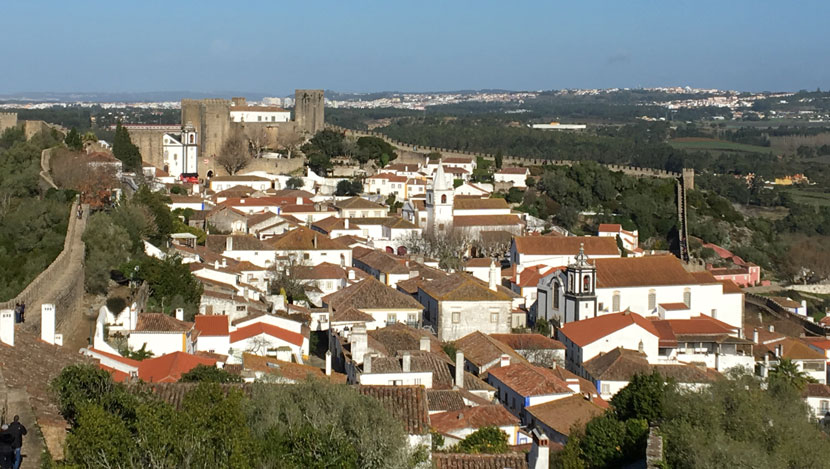 |
The 16th century aqueduct (behind one of the car parks) which used to supply water to the town.
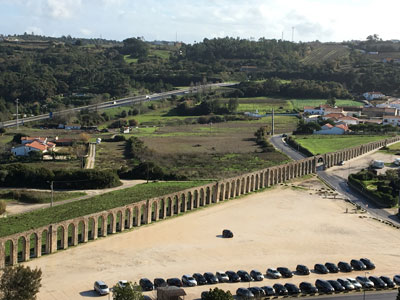 |
We walked around the town walls. There were no safety barriers despite some long drops.
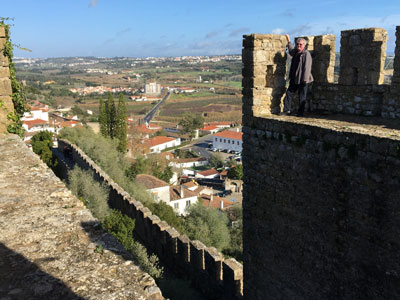 |
Looking back along the wall to the Tower over the main gateway.
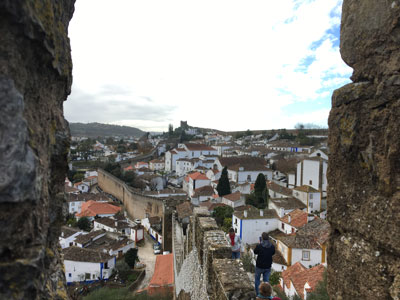 |
The main street with the castle at the far end.
 |
In the afternoon we drove to Peniche and managed to find our b&b in one of the narrow back streets. |
An excellent New Year's Eve meal at a local restaurant.
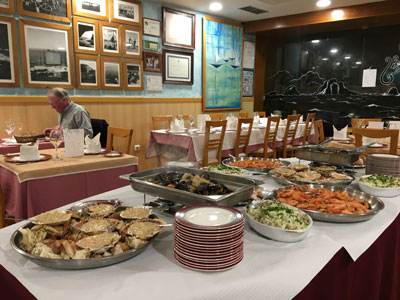 |
The next morning we took a walk through the town.
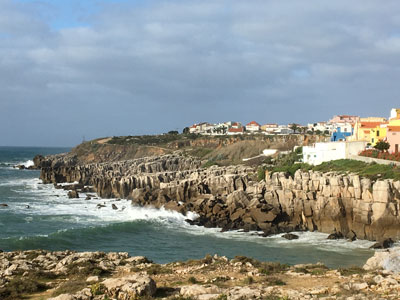 |
There's a large fort in Peniche which was built in the 16th century but unfortunately it was closed for renovations. |
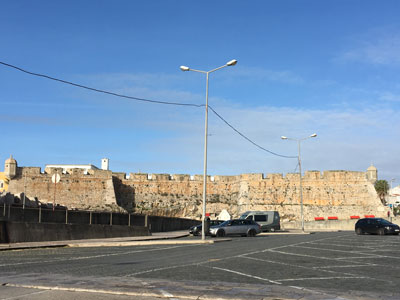
|
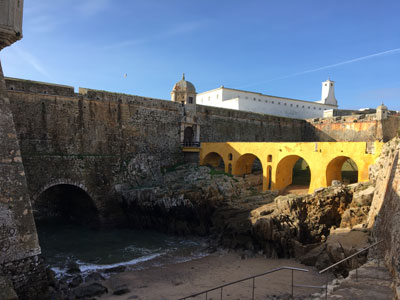
|
On Tuesday morning we drove around the peninsula and stopped at the lighthouse. |
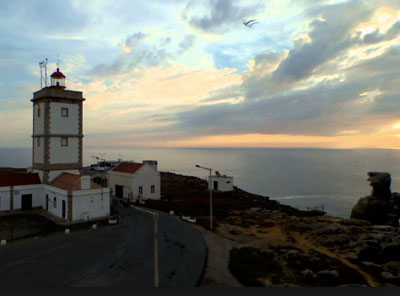
|
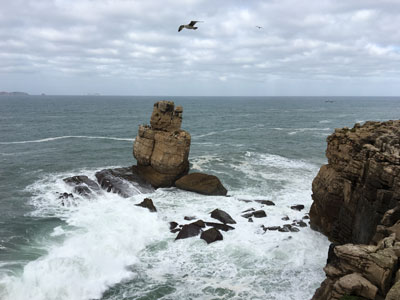
|
On Tuesday afternoon we returned to the garage and were able to pick up the van - hooray!
A happy Kevin relaxing in the van.
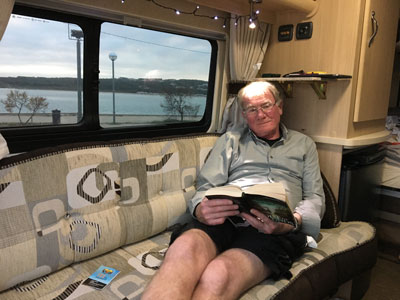 |
The next day we headed East on our way back to the UK. While in Portugal we'd seen lots of items made from cork - bags, shoes, postcards etc etc. Today we passed thousands of cork trees. The dark section is where the bark has been removed. It can be harvested every 9 years.
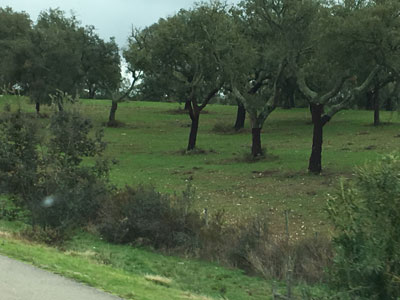 |
Our final stop in Portugal was at Elvas, a fortified town which guarded a key border crossing between Madrid and Lisbon and which is a UNESCO World Heritage Site. To the north and south of the town are forts which helped to protect it. It also has an impressive 8km long aqueduct.
|
A small section of the aqueduct.
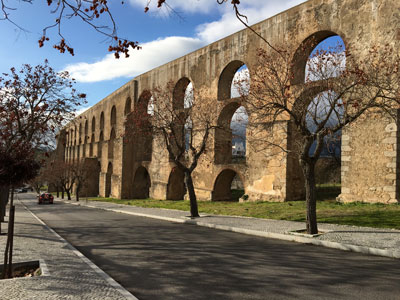 |
One of the four entrances to the town.
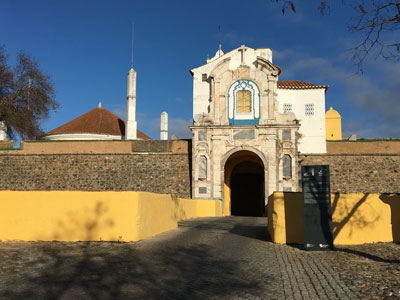 |
The town has the largest bulwarked dry-ditch system in the world. It was begun in the 17th century.
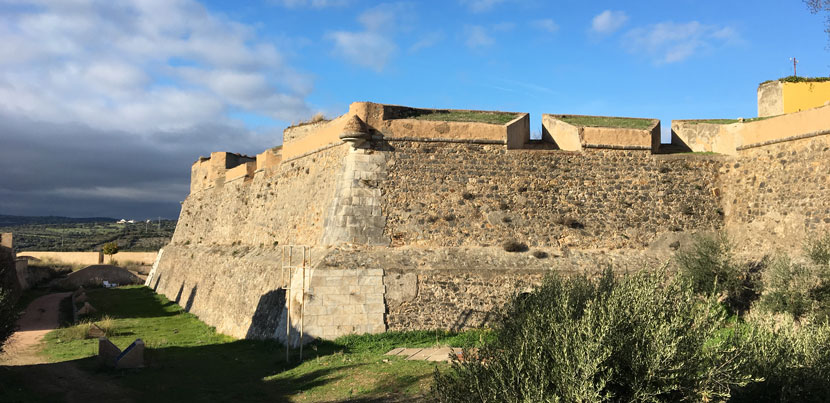 |
The main square in the old town.
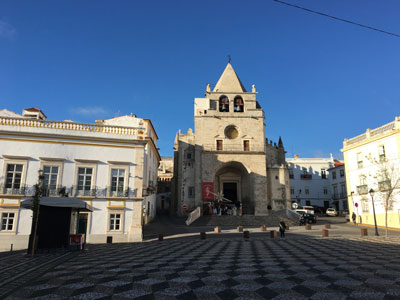 |
We visited the Military museum.
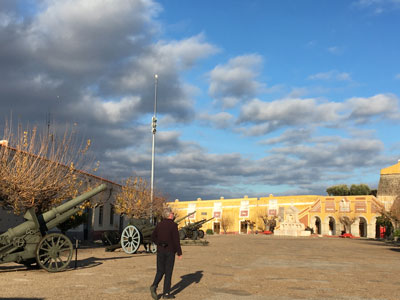 |
To the south of the town is the Fort of Santa Luzia.
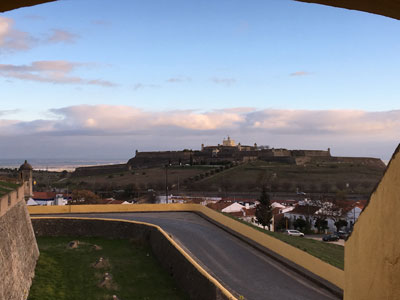 |
To the north, the even larger Fort of Graça.
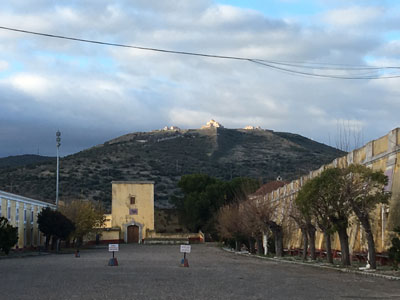 |
The following day we visited the Fort of St Luzia.
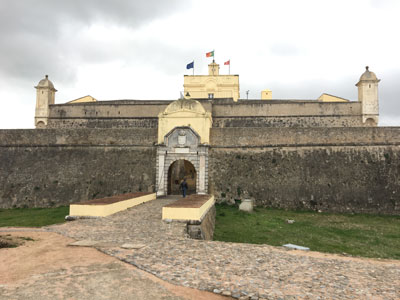 |
More impressive fortifications.
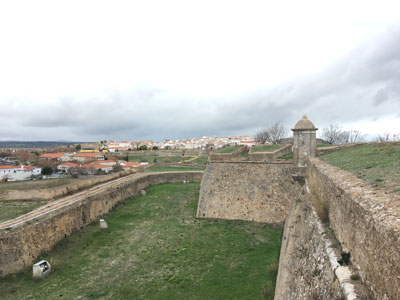 |
From the fort we could see the town and the Fort of Graça behind it.

The next day as we left Elvas we could see the Spanish town of Badajoz only a few km away.
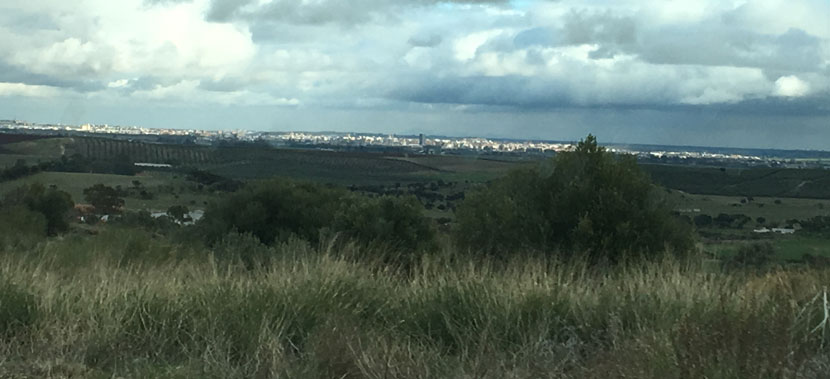
We parked at a new Aire in Badajoz and after a late lunch walked to the old town. However we'd forgotten that Spain has a long, late lunch hour so arrived at the tourist information office just after it had shut. We tried to explore the old town and castle but without a proper map it was very difficult.
The castle was built by the Moors.
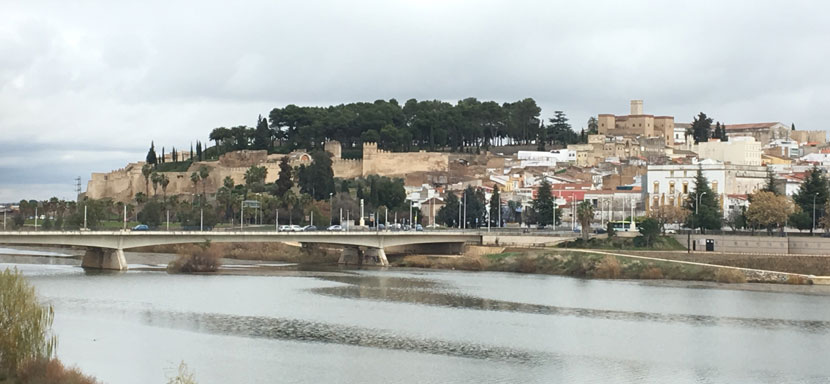
|
Palms Gate, once a main entrance to the town.
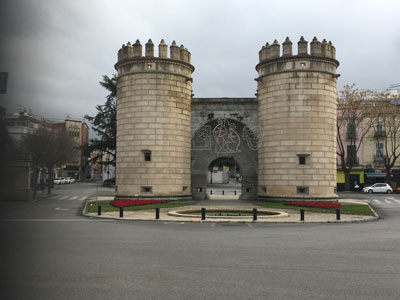 |
Part of the Moorish Castle.
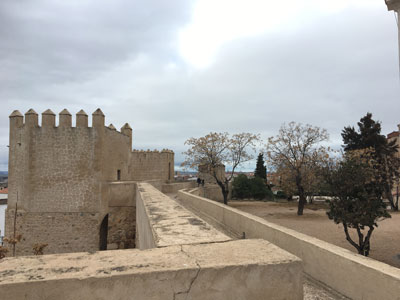 |
From Badajoz we drove to Salamanca but due to the weather forecast predicting snow in Norther Spain we just spent a night there and then travelled on to Santander where we got the ferry back to the UK.
North West Spain
Portugal 1 - Christmas 2017
Portugal 2 - 2018
top of page |
An meal on the ferry to celebrate our 45th wedding anniversary.
 |
|

